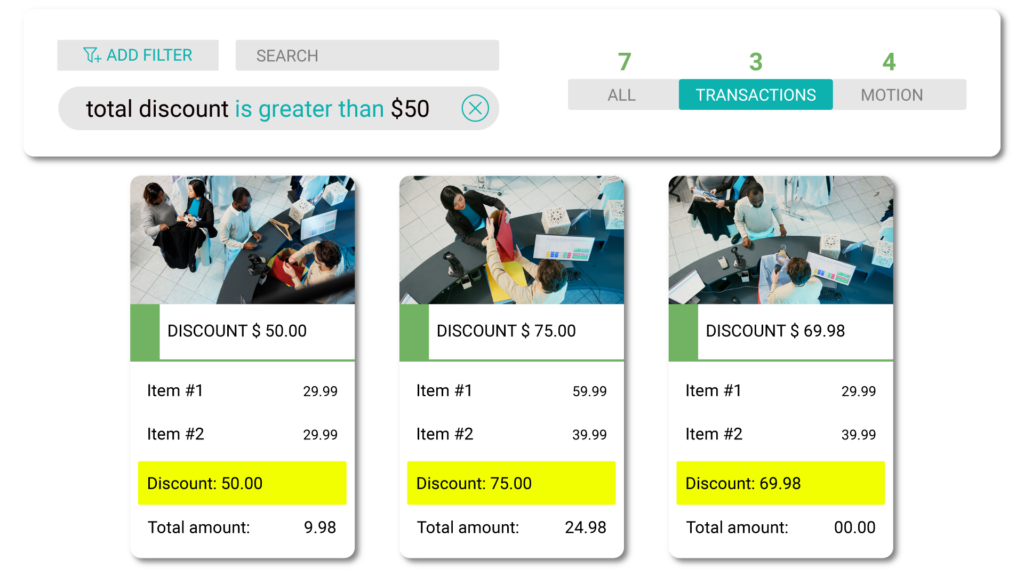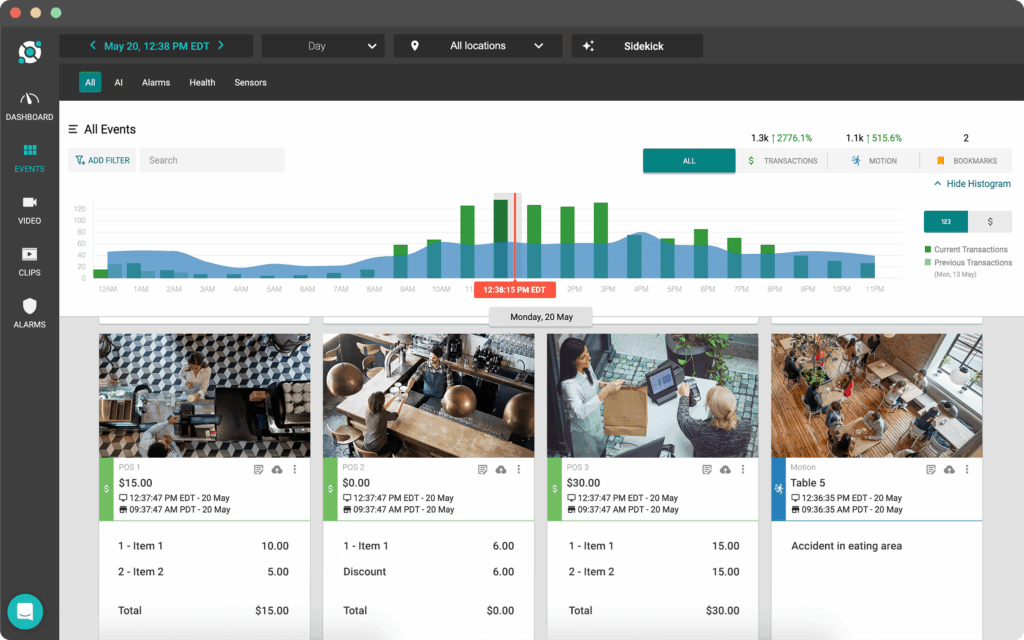
Employee theft isn’t just a crime, it’s a cost center hiding in plain sight.
You’re not overreacting. You’re under-protecting.
Every week that passes without visibility is a week of margin quietly walking out the door. And chances are, you won’t catch it until it’s already hurt your business.
Here’s what that really means, and why being proactive is the only move that makes business sense.
Table of Contents
ToggleEmployee theft is more common than you think
A recent survey by Business.com found 67% of employees reported committing at least one form of workplace theft (taking time, supplies, cash etc.) SOURCE
That’s not a rare incident. That’s a pattern. And it gets worse when the business lacks the tools to see what’s actually happening behind the counter, in the back room, or at the POS.
What looks like inventory shrink might actually be refund fraud. What you think is “extra sick time” might be buddy punching.
Without proof, you’re left guessing, and that costs more than you think.
Small thefts add up to major losses
Let’s do the math.
One employee takes $20/day in cash? That’s over $7,000/year
Three staff members discount meals or items for friends? That’s $300/week per location
One person consistently claims time they didn’t work? That’s hundreds of wasted labor hours
Now multiply that by every location you run, and every shift you’re not watching.
It’s not about a single incident, it’s the compounding effect of unchecked behavior.
Theft doesn’t just hit your P&L - it hits your people
When good employees see bad ones getting away with theft, morale tanks.
Turnover increases. Trust evaporates. Culture suffers. And those costs ripple out for months – especially in retail, food service, and hospitality where margins are already thin.
You can’t build a high-performance team when they’re constantly wondering who’s stealing and who’s looking the other way.
Signs it’s already happening
Here’s what business owners tell us before they install Solink:
“The numbers don’t add up, but I can’t prove why.”
“My gut says something’s off with refunds and voids.”
“I know someone’s skimming, but I don’t have the time to dig through the footage.”
“I feel like I’m blind when I’m not physically in the store.”
If that sounds familiar, you’re not alone. And you’re not stuck.
Visibility is profit
Most loss prevention strategies come too late – after the damage is done.
A proactive strategy flips that script:
See what happened without hours of footage
Get alerts for out-of-policy activity in real time
Spot suspicious behavior across locations
Tie video to transactions instantly
Train and retain your best people by holding the rest accountable
With the right tools, theft becomes visible. And visibility creates control.
What proactive prevention looks like - the tools you need to be using
Here’s what changes when you stop relying on gut instinct and start using video and data together with Solink.
1. Connect your POS to your cameras
When your cameras are synced with your point-of-sale system, every transaction becomes searchable and provable. You can:
Match refunds, voids, and discounts to exact moments on video
Quickly spot patterns tied to specific employees or shifts
Review suspicious transactions without manual video hunting
It’s the easiest way to spot theft disguised as legitimate activity – like over-discounting for friends, fake returns, or cash skimming at the till. No guessing. No accusations. Just facts.
2. Set motion search zones to monitor blind spots and backdoor theft
With motion search, you don’t need to watch hours of footage. Solink lets you:
Create motion zones around sensitive areas like back doors, safes, or dumpsters
Get alerts when there’s movement during non-shift hours
Track how long employees spend in key locations, like break rooms or storage areas
It’s a simple way to catch common loss tactics – like stashing merchandise near exits or extending breaks far beyond policy.
3. Get oversight across all your locations from a single screen
If you manage multiple stores, consistency is everything. Solink makes it easy to:
Compare employee behavior across locations
Standardize loss prevention practices
Spot which locations are leaking revenue faster than others
It’s not just about security – it’s about building operational discipline at scale.
4. Receive real-time alerts when something’s off
Solink gives you more than footage. It gives you awareness.
Set real-time alerts for:
After-hours access
Voids above a certain dollar value
Frequent refund activity by a single employee
Movement in restricted areas during odd times
Instead of finding out days later, you know within minutes – and can act right away.

5. Use video and data to coach or correct
Sometimes, it’s not about theft, it’s about training. Solink helps you:
Show new employees the right way to handle transactions
Prove when policies weren’t followed without “he said, she said”
Document patterns for HR conversations or terminations
It gives managers confidence to act and employees clarity on what’s expected.
6. Get support from Solink’s team during audits and investigations
You’re not in this alone. Solink’s Customer Success team works with you to:
Spot suspicious trends before they grow
Pull footage and reports for investigations
Recommend best practices based on what’s working for other operators
They’ve seen thousands of cases across industries. You get all of that expertise on your side, without needing a full-time loss prevention department.
The longer you wait, the more it costs - update your security today
Every week without Solink is a week where theft, fraud, and missed opportunities stack up. The real risk isn’t being too cautious—it’s waiting until the damage is permanent.
You’re not just protecting cash or merchandise. You’re protecting trust, reputation, and your ability to scale with confidence.
Solink helps you stop theft before it starts—by showing you what’s happening behind the numbers.
Book a demo today and see how visibility turns loss into insight.